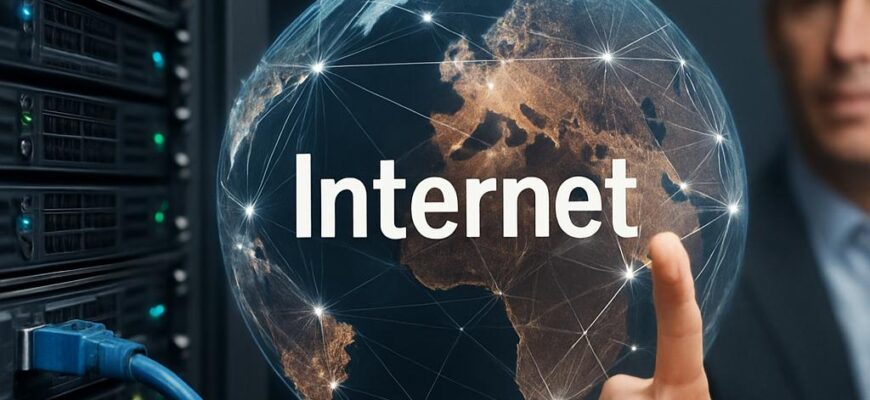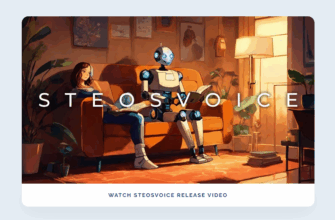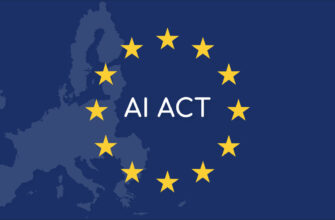The words “The Internet: how it works and who owns it” can make the whole thing sound like a mysterious machine with a single owner, but the reality is much messier and more interesting. This article walks through the technical scaffolding that makes the web, email, and streaming possible, then unpacks the tangled web of institutions, companies, and laws that claim partial control. Read on for clear explanations, real-world examples, and a few practical analogies to help you picture the systems behind the screens.
- A short origin story and why the architecture matters
- How data moves: packets, protocols, and layers
- Packet switching versus circuit switching
- Routing and addressing: who tells the packets where to go?
- Domain names and the DNS system
- The physical internet: cables, routers, and the last mile
- Submarine cables and chokepoints
- Who governs the internet: standards bodies and coordination forums
- Table: Major institutions and their roles
- Who owns the pipes and the platforms?
- Content delivery and the rise of CDNs
- Legal control: governments, courts, and cross-border tensions
- Who really pays for the internet?
- Privacy, surveillance, and who gets to see your data
- Security: threats and the mechanisms that defend the internet
- Open internet principles and debates over control
- Real-world examples that illustrate how the internet behaves
- Emerging trends: edge compute, satellites, and decentralization
- Practical tips for users who want more control and privacy
- Wrapping up the picture: ownership is shared and contextual
A short origin story and why the architecture matters
The internet began as a research project and grew into a global communications system without any one entity writing the rulebook for ownership. ARPANET and early university networks favored open protocols and shared standards, which encouraged interoperability rather than centralized control. That history still shapes its architecture: layered protocols, modular components, and a culture of standards make the internet resilient and adaptable.
Understanding this background helps explain why the internet resists simple ownership claims. Its design intentionally distributes responsibility across many actors—hardware vendors, network operators, standards bodies, and content providers. Because functions are divided, control is fragmented: one group sets addresses, another routes packets, and yet another defines how browsers render pages.
This layered, federated design also creates political and legal gray zones. A government can regulate data flows inside its borders or pressure companies that run critical services, but it cannot “own” the entire network in the way a railroad company owns tracks. Ownership is a mosaic of infrastructure, governance, and legal authority, which we’ll unpack further below.
How data moves: packets, protocols, and layers
At the most basic level, the internet moves information by breaking it into packets—small chunks of data that travel independently across networks. Each packet carries addressing information (where it’s going) and a portion of the message. Packets may take different paths and get reassembled at their destination, which is why a video stream can survive a temporary router outage.
Protocols are the rules that devices follow to exchange those packets. Think of them as languages and etiquette: TCP ensures reliable delivery, IP handles addressing and routing, HTTP defines how web pages are requested, and DNS translates readable names like example.com into numerical addresses. These protocols are standardized so diverse hardware and software can interoperate smoothly.
The internet’s layered model—application, transport, network, link, and physical—keeps things manageable. Developers can improve a web app without redesigning routing, and a fiber company can upgrade cables without changing email servers. That separation of concerns is a key reason the internet scaled from a handful of hosts to billions of devices.
Packet switching versus circuit switching
Packet switching, which the internet relies on, contrasts with circuit switching used by traditional telephone networks. In circuit switching, a dedicated path is reserved for the entire duration of a call; in packet switching, the network optimizes resource usage by sending packets where capacity exists. This efficiency is what makes the internet well-suited for bursty, data-heavy applications like web browsing and video.
Because packets can be rerouted dynamically, networks are resilient to failures. If a link goes down, routers find alternative paths within milliseconds. That routing flexibility underpins the robustness of global services, but it also introduces complexity when trying to enforce policies across many operators.
Packet switching is not perfect for all uses—real-time voice needs low latency—but modern protocols and network engineering techniques minimize those issues. Technologies like Quality of Service (QoS), edge computing, and adaptive codecs help smooth the rough edges for latency-sensitive applications.
Routing and addressing: who tells the packets where to go?
Routing is the set of decisions that moves packets across networks from source to destination. Routers exchange reachability information using protocols like BGP (Border Gateway Protocol), which effectively tells the internet how to steer traffic between autonomous systems—networks operated by ISPs, enterprises, or governments. These routing tables are large and constantly changing as network conditions evolve.
IP addresses are the identifiers that routing uses. IPv4, the original system, ran out of addresses, which led to IPv6 with a vastly larger address space. Regional Internet Registries (RIRs) allocate address blocks to ISPs and organizations, but they don’t “own” the entire address space in a proprietary sense; they manage distribution under agreed policies. Ownership of an address block is more like stewardship than absolute property.
Routing can be manipulated—intentionally or accidentally—through practices such as route leaking or BGP hijacking, which can cause outages or traffic interception. Fixes exist but require cooperation among many network operators, reflecting again the internet’s decentralized and cooperative nature.
Domain names and the DNS system
The Domain Name System (DNS) translates human-friendly names into IP addresses and is often likened to a phone book for the internet. Managed through a hierarchy, DNS starts with the root, which points to top-level domains like .com and .org, and cascades down to registrars and registrants. While DNS makes web addresses usable, it’s also a single point of configuration that can be targeted for censorship or attacks.
ICANN oversees the root and top-level domains, but thousands of registrars and millions of domain owners operate beneath that layer. Changing the way DNS works globally requires coordination at the highest levels; but many countries and ISPs operate local resolvers that can override or filter DNS responses within their jurisdiction. That mix of global coordination and local control is a recurring theme in internet governance.
DNSSEC, DNS over HTTPS, and other enhancements aim to improve integrity and privacy, but adoption is uneven. The result is a useful, mostly reliable system that still contains weak links where misconfiguration or policy disputes can disrupt services.
The physical internet: cables, routers, and the last mile
Under the abstract layers, there’s a very physical infrastructure: fiber optics, copper wires, satellites, data centers, and routers. Submarine cables carry the bulk of international traffic, with high-capacity fibers spanning oceans and landing in coastal hubs. Data centers house servers and storage, while content delivery networks (CDNs) cache copies of popular content close to users for speed.
The “last mile”—the connection between a user’s home or business and the ISP—often determines speed and reliability more than international backbones do. That section can involve fiber, coaxial cable, DSL, or wireless technologies, each with trade-offs and different providers. Local regulations, geography, and investment choices shape the quality of last-mile access across cities and countries.
Because laying fiber and building data centers is capital intensive, infrastructure is typically owned by a mix of private companies, municipal utilities, and sometimes public-private partnerships. This means physical control of the network is concentrated in places, even if the logical control remains distributed.
Submarine cables and chokepoints
Submarine cables are the arteries of global connectivity, and a handful of landing sites handle enormous volumes of traffic. When a cable is cut—by an anchor dragging bedrock or natural disaster—the detour can be slow and expensive, affecting latency and throughput for entire regions. Repair involves specialized ships and coordinated international effort, underscoring how physical geography shapes digital experience.
Some countries sit at geographic chokepoints where a few cables funnel all data in and out. Those chokepoints create strategic vulnerabilities and attract attention from state actors and businesses alike. Governments sometimes invest in redundant routes or satellite links to reduce reliance on fragile paths, but redundancy is costly and takes time to deploy.
Emerging alternatives like low-earth-orbit satellite constellations promise new routes and lower latency for remote regions, but they do not immediately displace the existing undersea infrastructure that handles most bulk traffic today.
Who governs the internet: standards bodies and coordination forums
Internet governance is a layered mix of technical standard-setting organizations, nonprofit coordination bodies, industry consortia, and national regulators. No single group “owns” the internet; instead, a mosaic of stakeholders makes technical and policy decisions that shape behavior. This distributed governance is both its strength and its Achilles’ heel.
Key technical bodies include the Internet Engineering Task Force (IETF), which develops open standards like TCP/IP and HTTP; the Internet Architecture Board (IAB); and the World Wide Web Consortium (W3C), which focuses on web technologies. These organizations rely on open processes where engineers and organizations propose, debate, and refine specifications. Their outputs become de facto standards through broad adoption rather than legal decree.
Policy and coordination happen in parallel. ICANN manages the domain name system and coordinates unique identifiers. Regional Internet Registries allocate IP addresses. National governments and regulators create laws affecting privacy, competition, and content. The result is an ecosystem where technical norms, commercial incentives, and legal rules intersect in sometimes unpredictable ways.
Table: Major institutions and their roles
| Organization | Primary role | Type |
|---|---|---|
| ICANN | Coordinates domain name system and root | Nonprofit/corporate hybrid |
| IETF | Develops open internet protocols | Open standards community |
| RIRs (e.g., ARIN, RIPE) | Allocate IP addresses regionally | Regional nonprofit |
| Local regulators | Enforce national laws on telecom and content | Government agencies |
Who owns the pipes and the platforms?
Ownership splits between two broad categories: infrastructure providers that own the pipes and centers, and platform companies that control services and interfaces. Telecom operators, cable companies, and neutral-host data centers own much of the physical hardware. Big tech firms—social networks, cloud providers, and content platforms—control the user-facing services and massive volumes of data.
This division creates different leverage points. An ISP can throttle or prioritize traffic on its network, but a platform controls algorithms, content moderation, and where advertisements appear. Both kinds of actors exert power but in different domains: one over connectivity and the other over attention and data. That duality is central to debates around competition, privacy, and regulation.
Ownership can be layered: a content provider uses CDNs owned by other companies, which in turn peer with ISPs, which lease backhaul from submarine cable owners. Tracing responsibility when things go wrong requires unravelling contracts and operational ties across many entities, not pointing to a single proprietor.
Content delivery and the rise of CDNs
Content delivery networks place cached copies of popular content in locations closer to end users, reducing latency and lowering load on origin servers. Firms like Akamai, Cloudflare, and major cloud providers operate massive distributed networks that, for many practical purposes, sit between users and content creators. They speed up delivery and also provide security services like DDoS mitigation.
Because CDNs control the nodes that serve billions of requests per second, their policies and outages can impact large swathes of the web. When a CDN misconfigures a route or a software update causes a bug, many unrelated websites can go offline simultaneously. This concentration of operational power raises questions about decentralization versus performance trade-offs.
From my own experience managing small websites, using a CDN transformed user experience by cutting page load times dramatically, but it also introduced an extra dependency that required monitoring and occasional troubleshooting. That trade-off—speed and convenience versus centralized reliance—is common for many organizations.
Legal control: governments, courts, and cross-border tensions

Governments exercise legal jurisdiction over internet services within their borders, which gives them substantial control over content, privacy, and business practices. They can order ISPs to block sites, compel companies to hand over data, or require data localization. These measures reflect national priorities but can collide with the global, distributed nature of the internet.
Cross-border conflicts abound: a court in one country may order content removed globally, while another country demands access to data the company stores elsewhere. Multinational corporations often find themselves navigating a patchwork of laws, sometimes complying with the most restrictive regime to avoid legal risk. As a result, law shapes user experience in ways that vary dramatically between jurisdictions.
Regulatory initiatives—privacy laws like GDPR, antitrust cases against dominant platforms, and content moderation legislation—are reshaping the balance of power between companies and states. Expect this legal landscape to remain dynamic as policymakers grapple with how to protect citizens without stifling innovation or fragmenting the global network.
Who really pays for the internet?
The economics of the internet are spread across many players: consumers pay ISPs for access, advertisers fund most free services, and enterprises pay for cloud and enterprise connectivity. Infrastructure costs—laying fiber, maintaining cables, and running data centers—are typically recouped through service subscriptions and commercial contracts. There is no single “bill-payer,” just a network of transactions that keep packets moving.
Advertising underpins much of the consumer-facing web, creating incentives for platforms to optimize engagement. That business model shapes product design and privacy practices. In contrast, enterprises and governments often purchase dedicated services or private networks that bypass some of the public internet’s unpredictability for better performance and security.
Public investment and community initiatives also play a role. Municipal broadband projects and nonprofit ISPs aim to address market failures where private investment is insufficient. These public efforts show that access and affordability are as much policy questions as they are technical or commercial ones.
Privacy, surveillance, and who gets to see your data
Privacy on the internet is fragmented: some services collect and analyze lots of personal data, while others offer privacy-preserving alternatives. Encryption—TLS for web traffic, end-to-end encryption for messaging—protects content in transit from casual observation. However, metadata, logs, and server-side copies often remain available and can be valuable to companies or governments.
Surveillance takes many forms, from lawful access requests to mass data collection programs. National security and law enforcement agencies sometimes demand access to communications, leading to legal battles and design choices by companies. Some firms have pushed back, improving transparency and implementing stronger encryption to reduce the amount of data they can hand over.
In daily life, privacy choices are often constrained by convenience and network effects: people choose services where their contacts are, even if those services collect more data. Changing that dynamic requires alternatives that are both private and widely adopted—a tough combination to achieve at scale.
Security: threats and the mechanisms that defend the internet

Security is a perpetual arms race. Threats range from opportunistic scams and phishing to sophisticated nation-state attacks targeting critical infrastructure. Protocols like TLS, secure DNS, and authentication standards help mitigate risks, but misconfigurations and legacy systems leave many attack surfaces exposed. Security improvements require patching, better defaults, and sometimes systemic changes in how networks operate.
BGP lacks strong inherent authentication, making routing susceptible to spoofing and hijacks. Initiatives like RPKI aim to add cryptographic validation to routing announcements, but deployment is uneven and requires coordination across many operators. Similarly, endpoint security depends on keeping operating systems and applications up to date, which remains a challenge for millions of devices.
Practical security is both technical and procedural—incident response plans, shared threat intelligence, and backup routes are as important as cryptographic protocols. In my experience running small networked systems, the most useful defenses were reliable backups and a tested recovery process, not just software patches.
Open internet principles and debates over control
Net neutrality—the idea that ISPs should treat all traffic equally—has been a major debate in policy circles. Proponents argue that neutrality preserves innovation by preventing ISPs from favoring certain services. Critics say prioritization can enable better quality for latency-sensitive applications if done transparently. The policy pendulum swings as administrations and regulators change, reflecting competing visions of fairness and market efficiency.
Beyond neutrality, debates focus on platform power, content moderation, and algorithmic transparency. When a handful of companies control distribution channels for news and social interaction, their policies can shape public discourse. Calls for greater accountability, interoperability, and data portability are growing louder as users and regulators question the balance of power.
There are no easy answers. Trade-offs—between free expression and safety, between centralization for efficiency and decentralization for resilience—require nuanced policy conversations that bring technical, legal, and social perspectives together.
Real-world examples that illustrate how the internet behaves
Consider the 2021 outage of a major CDN that briefly took down thousands of websites. The incident showed how a configuration change at one provider can cascade into widespread service loss. It also highlighted the value of redundancy and the risk of concentration: performance optimizations that centralize services can create single points of failure.
Another example is the rollout of IPv6. Technically necessary to accommodate address growth, its adoption proceeded slowly because ISPs, device manufacturers, and content providers needed to update systems in concert. The slow transition illustrates how technical upgrades can be held back by coordination challenges and cost-benefit calculations across many stakeholders.
On a more personal note, I once worked with a community organization trying to set up local Wi-Fi in a low-income neighborhood. We faced permitting hurdles, backhaul costs, and equipment theft. Those on-the-ground challenges remind us that while the internet is global, access is intensely local and shaped by practical constraints as much as by standards or policy.
Emerging trends: edge compute, satellites, and decentralization
Edge computing moves processing closer to users, reducing latency and making interactive applications smoother. This trend complements CDNs and reflects the growing demand for immediacy in gaming, AR/VR, and industrial controls. Edge architectures blur the line between centralized cloud services and local infrastructure, raising new questions about data residency and control.
Satellite constellations promise to extend high-speed connectivity to remote regions and provide alternative routes for traffic. They add resilience but introduce their own constraints—limited spectrum, orbital capacity, and regulatory challenges. As these systems mature, they will reshape connectivity economics in underserved areas while interacting with terrestrial networks in complex ways.
There is also renewed interest in decentralization: peer-to-peer protocols, federated social networks, and crypto-based naming systems seek to reduce reliance on single providers. These projects show promise but face hurdles in usability, moderation, and incentive alignment. The struggle between centralized convenience and decentralized control remains an active area of innovation.
Practical tips for users who want more control and privacy
Protecting your privacy and improving your security starts with simple actions: enable two-factor authentication, keep devices updated, and use a reputable password manager. These steps reduce the most common attack vectors and are accessible to non-technical users. Small changes can greatly reduce risk without requiring deep technical knowledge.
For greater privacy, consider using encrypted messaging apps with end-to-end encryption, a trusted VPN when on public Wi-Fi, and privacy-focused browsers or DNS resolvers. These tools trade off convenience for stronger protections, so choose the mix that fits your needs. Remember that no single tool is a panacea; layered defenses work best.
Where possible, support policies and providers that align with your values—open standards, transparency, and good data practices. Voting with your attention and money helps shape market incentives, especially around issues of data governance and competition.
Wrapping up the picture: ownership is shared and contextual
There is no single owner of the internet in the way a company owns a building. Ownership is distributed across infrastructure owners, standards bodies, platform companies, and governments, with users and civil society shaping norms. This plurality gives the internet resilience and dynamism, but it also complicates accountability and governance when problems arise.
Technical systems, commercial incentives, and legal frameworks interact to determine who controls what in practice. Sometimes control is concentrated—data centers, CDNs, and dominant platforms exert outsized influence—while other functions remain distributed and collaborative, like protocol development. Understanding these distinctions helps us engage more effectively in debates about policy, access, and design.
Ultimately, the internet works because many actors cooperate—often imperfectly—to exchange packets, enforce agreements, and build services. Its future will be shaped by technological innovation, regulatory choices, and collective decisions about what kind of online world we want to live in. If you care about that future, the most practical step is to learn where power lies and participate where you can: as a user, consumer, voter, or technologist.









